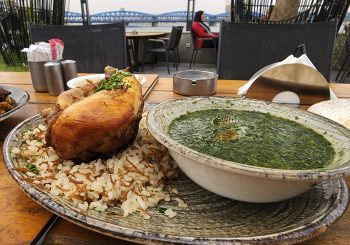The 21st century has brought many things: social networking, iPhones, driverless cars, terrorism, the Arab Spring, and the ongoing rise of the digital revolution. Yet, it has also seen another significant rising phenomenon: cities.
Just three years ago, 54 percent of the world population was reported by the United Nations to be living in cities, compared to 10 percent in the 20th century. The ‘Global 2030 Trends’ report has also seen governance at the city level to be where the real action takes place. From 1990 to 2007 alone, the world saw the rise of Shanghai, Dubai, Kuala Lumpur and Bangkok, sitting beside the top modern metropolises like Tokyo, New York, Paris and London.
More than ever, it is the success of the city that now determines the success of the state. For Anne Golden, former chief executive officer of the Conference Board of Canada, cities ‘punch above their weight when it comes to creating the country’s GDP’. The race to grab a share in the global economy has now become the new goal of future cities.
Egypt is now following the wheel with plans of establishing the ‘New Capital’ in the east of Cairo. The project is hoped to become a new global hub that would lure people away from the overpopulation of Cairo, as well as acting as a kick-start for the entire state’s economy.
Without even visiting it, the image of the city can be easily pictured in the mind: tall, lavish skyscrapers with some shimmery lights and perfectly aligned building blocks on the side of each road. Plans even include an imitation of New York City’s Central Park and a major theme park four times the size of Disneyland. It carries the modern aura of cities like Dubai, New York, Shanghai…but not Egypt.
According to the United Cities and Local governments’ report, culture has often taken a secondary importance in city development. The hunger and competitiveness for business investments has taken out the ‘human’ part of the city and replaced it with an artificial veil of a luxury product. Who are the inhabitants of the city? And what is their identity, or their feelings of belonging to the city itself? These are the questions that have been neglected.
A unique case can be seen in Singapore’s city development. Singapore was tragically forced into independence in 1965 after its separation from Malaysia. Lee Kuan Yew, its first renowned leader, stated in an interview with New York Times that ‘to understand Singapore, you’ve got to start off with an improbable story: it should not exist’. It has no common culture, no ethnic homogeneity, and no natural resources. The function of the city, therefore, became far different from the other common experiences. City planning was not just about creating modern landscapes and new business districts, but about creating a ‘city’: a home, a life, and a community.
The Urban Redevelopment Authority (URA) conducted a master plan in making the city ‘an endearing home’ for the people, putting the focus on designing new community centers (Hawker Centres) and gathering spaces for community activities. Ethnic districts, such as Chinatown and Little India, have also been constructed to bring life to the identity of the city’s inhabitants. Collaborative efforts such as the ‘National Parks Board’s Community in Bloom’ have been initiated to encourage the integration of the city’s inhabitants in the city development. Over 600 gardening groups connect together to contribute to the city’s gardening, and citizen consultation has become a routine of the URA’s tasks.
Yet Egypt is not like Singapore. It has long been known as an ancient state with a culture that developed over the years, and a home for generations that share a common history and language. In 1798, Napoleon Bonaparte imagined Egypt to be the centre of the world, where numerous immigrants would arrive from the depths of Africa and Arabia, and a thousand irrigation sluices carrying the waters all the way to oases and farther West.
It is this imagination of Egypt that lived inside the minds of leaders and travellers that should be reawakened in city planning today. It is not about building Dubai’s skyscrapers, Paris’ Eiffel Tower or New York’s Central Park, but about building and strengthening Egypt’s identity – making it a city for the people, and of the people.







Comments (0)